 In the northwestern part of Uzbekistan, just 8 kilometers from the city of Khodjeyli in the Republic of Karakalpakstan, lies one of the most significant sacred sites in the country — the historical and archaeological complex of Mizdakhkan. This ancient city, founded in the 4th century BC, is also the largest cemetery in Central Asia, dating back to the 2nd century BC. The complex spans three hills over an area of approximately two hundred hectares and includes historical architectural monuments from the Golden Horde of Khorezm, along with burial sites, some of which are over 2400 years old.
In the northwestern part of Uzbekistan, just 8 kilometers from the city of Khodjeyli in the Republic of Karakalpakstan, lies one of the most significant sacred sites in the country — the historical and archaeological complex of Mizdakhkan. This ancient city, founded in the 4th century BC, is also the largest cemetery in Central Asia, dating back to the 2nd century BC. The complex spans three hills over an area of approximately two hundred hectares and includes historical architectural monuments from the Golden Horde of Khorezm, along with burial sites, some of which are over 2400 years old.
In the Middle Ages, Mizdakhkan was the third largest city in Khorezm. In its vicinity, on the western hill, lay the ancient Khorezmian settlement of Gyaur-kala ("the fortress of the infidels"), which emerged in the 4th-3rd centuries BC.
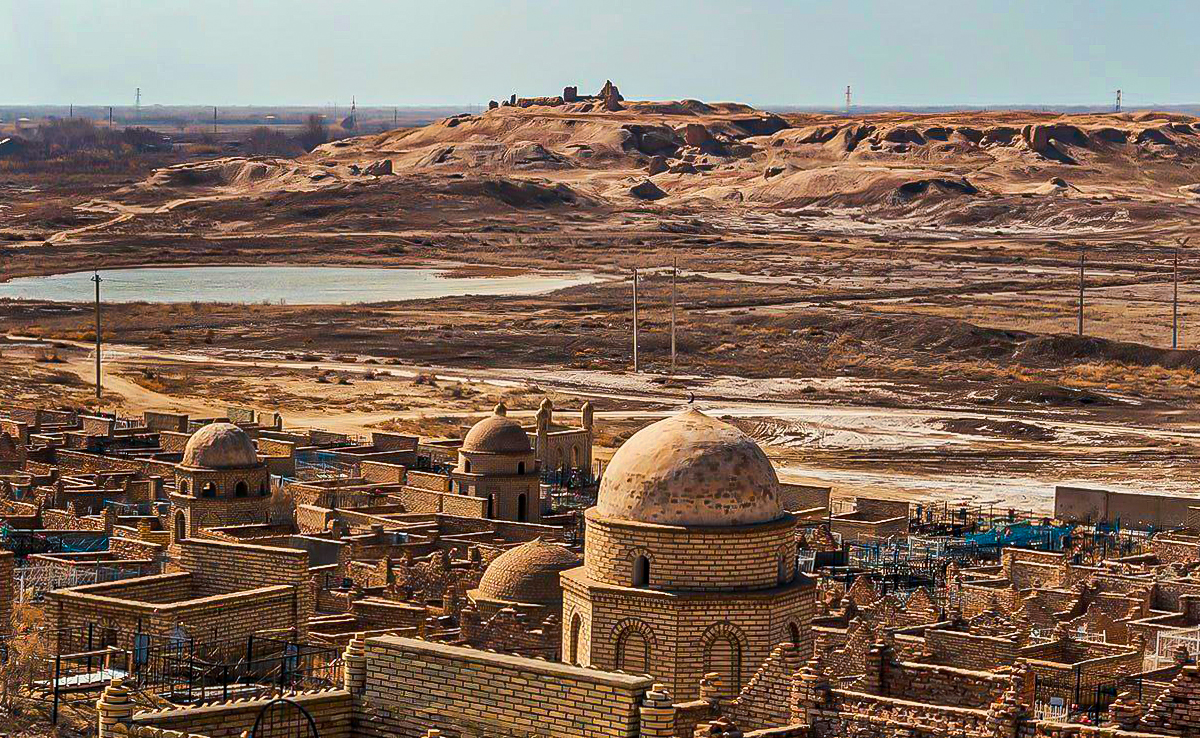 This settlement faced multiple destructions, first during the invasion of Genghis Khan and later in 1338 during the campaign of Amir Timur to Kunya-Urgench. However, the ten-meter-high walls of Gyaur-kala impress with their majestic strength. They enclose the ruins of two citadels that may have served both as temples and palace structures. One of the citadels functioned as both a temple and a defensive fortification. Numerous remnants of fireplaces indicate that the inhabitants of Gyaur-kala practiced fire worship as Zoroastrians. It was here, on the edge of the Kyzylkum Desert, that ancient people found inspiration and strength, revering the Sun and fire. In their prayers, they praised the god Ahura Mazda and his prophet Spitama Zarathustra — the founder of Zoroastrianism, symbolizing the search for truth and deep respect for nature.
This settlement faced multiple destructions, first during the invasion of Genghis Khan and later in 1338 during the campaign of Amir Timur to Kunya-Urgench. However, the ten-meter-high walls of Gyaur-kala impress with their majestic strength. They enclose the ruins of two citadels that may have served both as temples and palace structures. One of the citadels functioned as both a temple and a defensive fortification. Numerous remnants of fireplaces indicate that the inhabitants of Gyaur-kala practiced fire worship as Zoroastrians. It was here, on the edge of the Kyzylkum Desert, that ancient people found inspiration and strength, revering the Sun and fire. In their prayers, they praised the god Ahura Mazda and his prophet Spitama Zarathustra — the founder of Zoroastrianism, symbolizing the search for truth and deep respect for nature.
The fortress of Gyaur-kala received its name after the Arab conquest in the early 8th century, when the city's inhabitants resisted foreign invaders for nearly an entire century. The fortress continued to function until the arrival of the Mongols in 1220, when Genghis Khan's eldest son, Juchi, ordered its complete destruction.
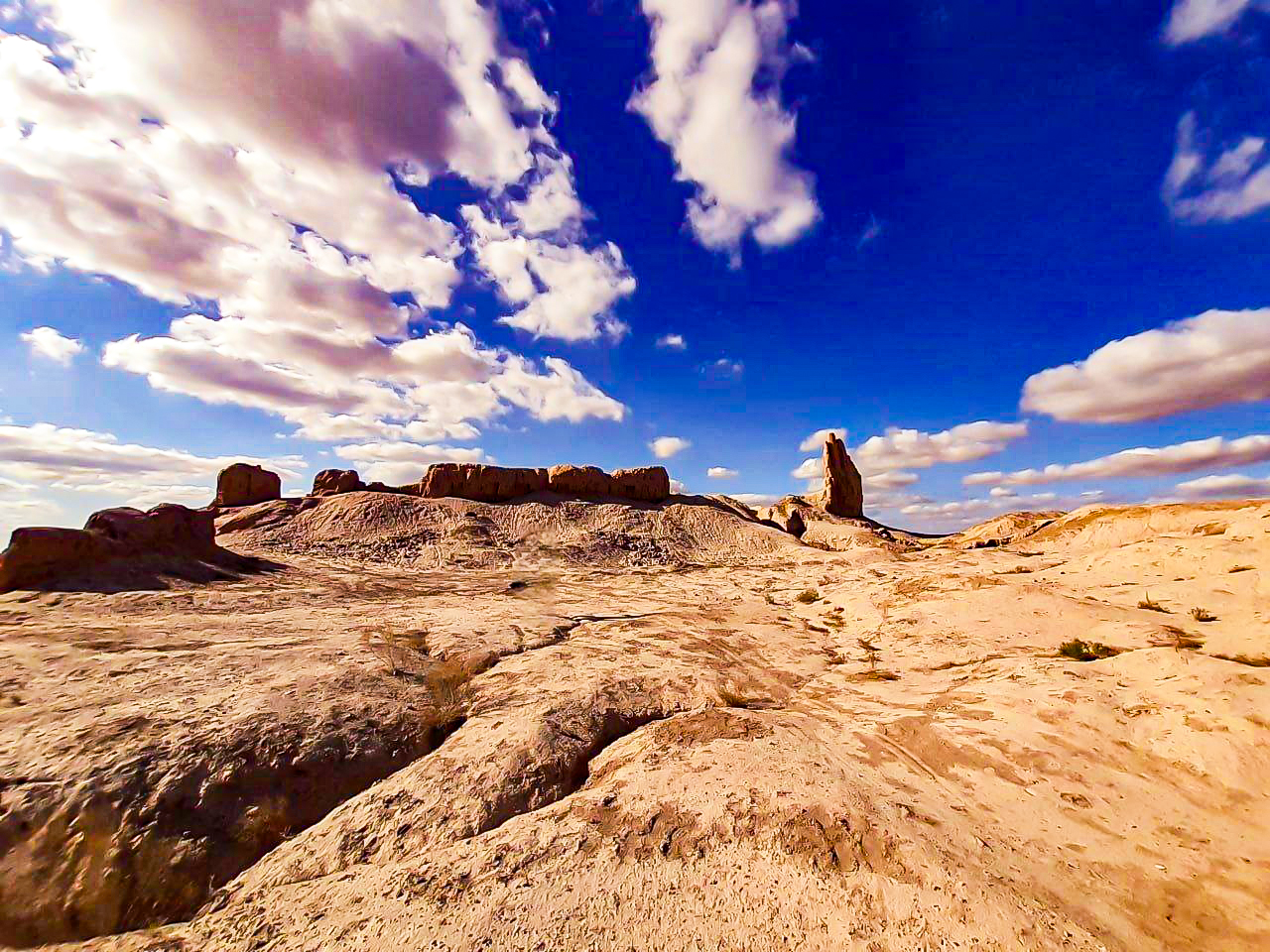 Subsequently, the residents established a new settlement near the ruins of Gyaur-kala. After the Arab conquest, much of the cemetery was covered by a Muslim necropolis, which led to the loss of the original meanings embedded in the complex.
Subsequently, the residents established a new settlement near the ruins of Gyaur-kala. After the Arab conquest, much of the cemetery was covered by a Muslim necropolis, which led to the loss of the original meanings embedded in the complex.
Throughout the necropolis, countless mazars and madrassas with a millennia-long history can be found. Some of these structures have been preserved in such good condition that they have almost retained their original appearance.
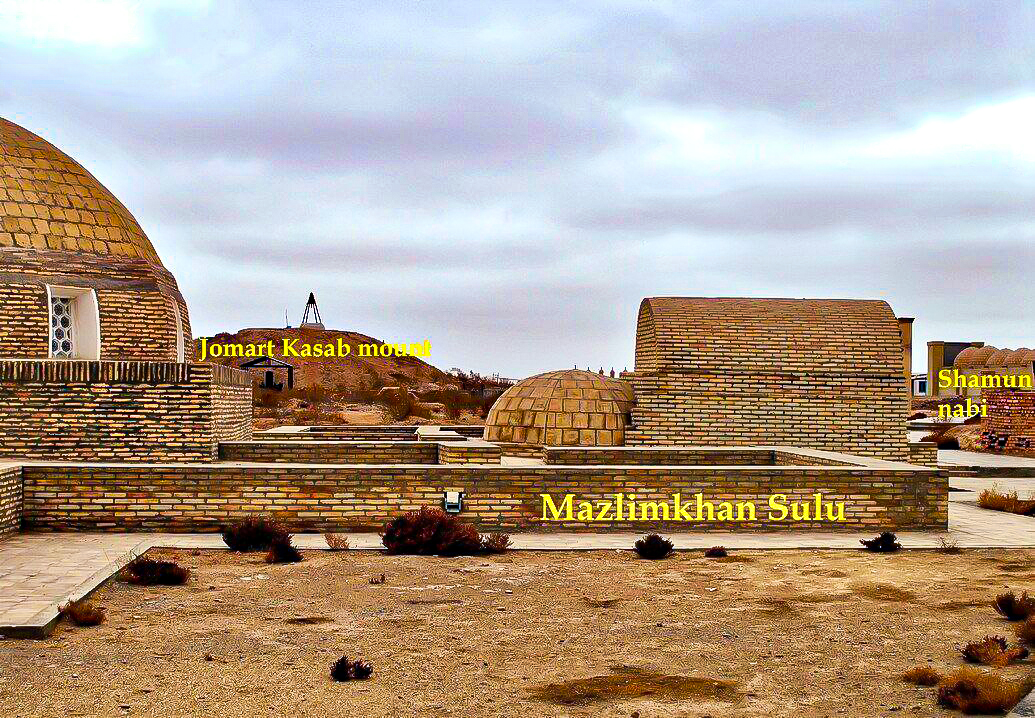 The semi-subterranean mausoleum of Princess Mazlumkhan Sulu dates back to the early 14th century, during the era of the Golden Horde.
The semi-subterranean mausoleum of Princess Mazlumkhan Sulu dates back to the early 14th century, during the era of the Golden Horde.
 This unique mazar, typical of multi-dome cult structures, is partially embedded in the ground, with only the domes and arch-shaped entrance rising above the surface. The simple exterior is compensated by the high level of architecture and decoration in the underground part. The building is distinctive, as there are no similar structures found anywhere in the territories of Khorezm.
This unique mazar, typical of multi-dome cult structures, is partially embedded in the ground, with only the domes and arch-shaped entrance rising above the surface. The simple exterior is compensated by the high level of architecture and decoration in the underground part. The building is distinctive, as there are no similar structures found anywhere in the territories of Khorezm.


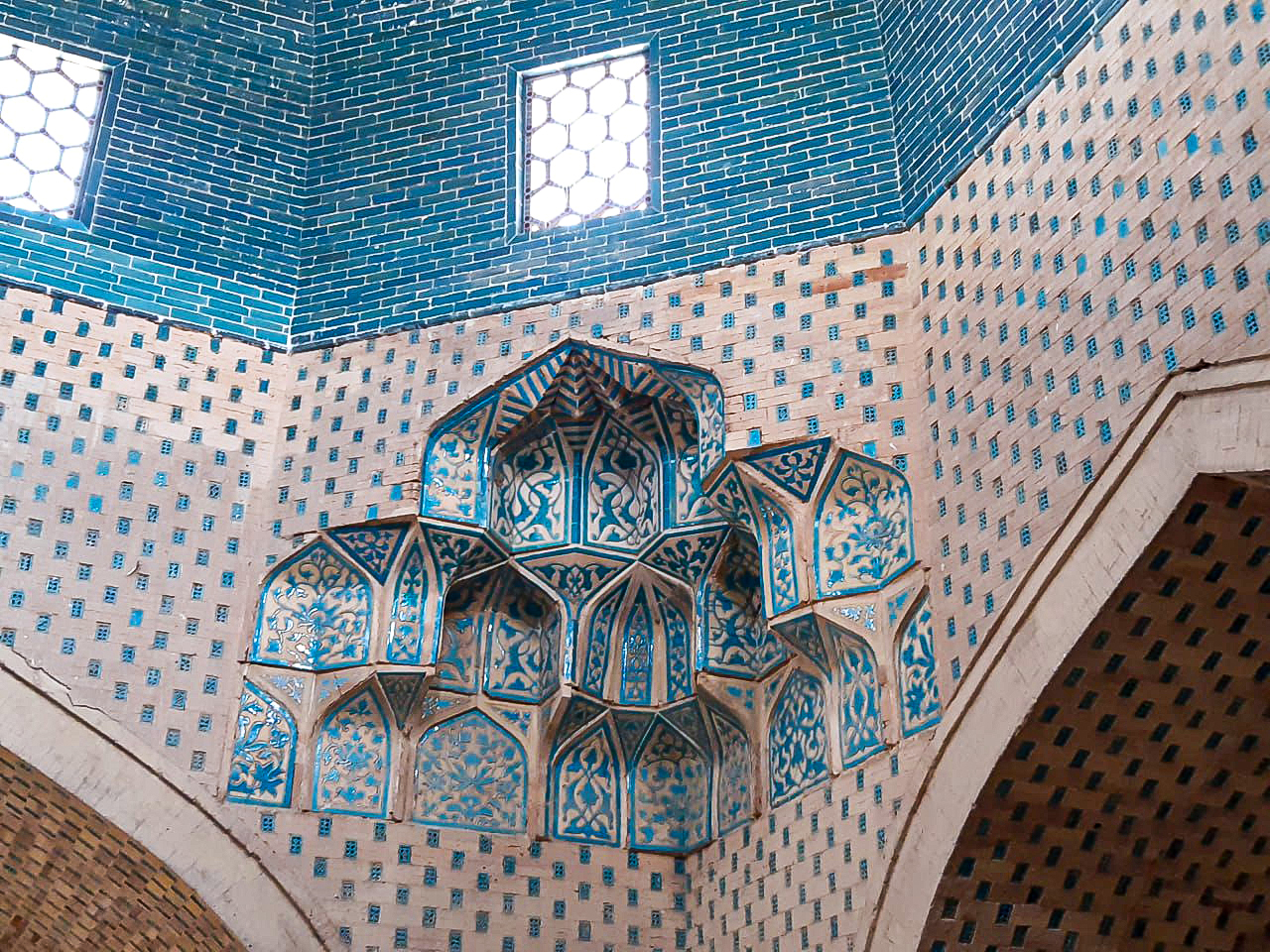

 146 meters southwest of the mausoleum of Mazlumkhan Sulu lies another mysterious mausoleum — the Khalifa Erejep, dating back to the 12th-14th centuries. Today, only three of its walls remain, along with minor remnants of the dome and burned polished brick masonry on the façade.
146 meters southwest of the mausoleum of Mazlumkhan Sulu lies another mysterious mausoleum — the Khalifa Erejep, dating back to the 12th-14th centuries. Today, only three of its walls remain, along with minor remnants of the dome and burned polished brick masonry on the façade.

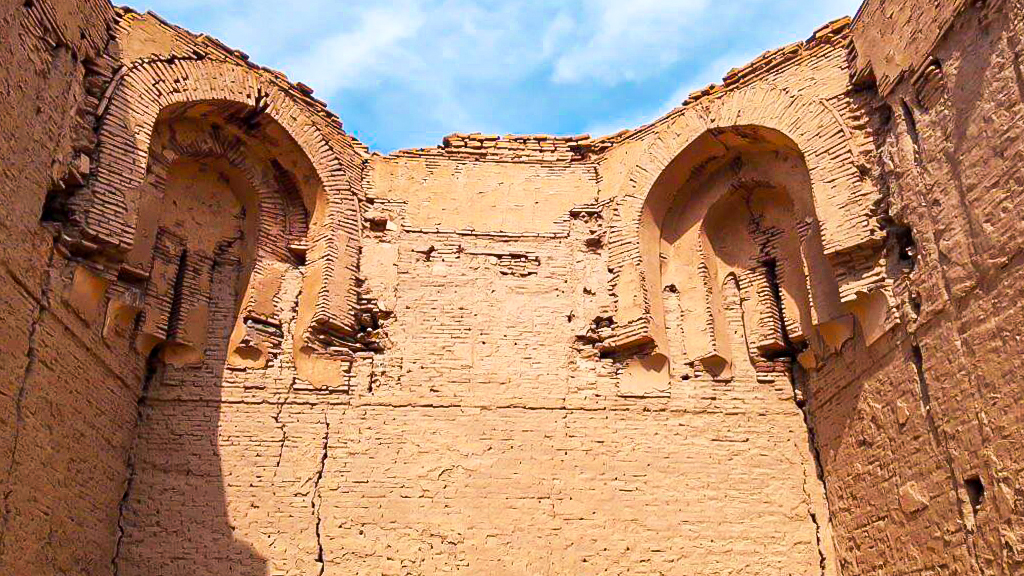 Scientists assume that this monument is of Sufi origin. According to legend, a saint is buried here, who began preaching Islam at the dawn of its spread in this area. There are ancient beliefs dating back to pre-Islamic times, according to which the "World Clock" is located here, measuring the time of human existence. It is said that when the last brick falls from the walls of the mausoleum, the apocalypse will occur, and life on Earth will come to its end. Therefore, pilgrims carefully collect stones and place them next to each other, reciting prayers for salvation.
Scientists assume that this monument is of Sufi origin. According to legend, a saint is buried here, who began preaching Islam at the dawn of its spread in this area. There are ancient beliefs dating back to pre-Islamic times, according to which the "World Clock" is located here, measuring the time of human existence. It is said that when the last brick falls from the walls of the mausoleum, the apocalypse will occur, and life on Earth will come to its end. Therefore, pilgrims carefully collect stones and place them next to each other, reciting prayers for salvation.
In the center of the necropolis stands the mausoleum of Shamun Nabi, featuring seven domes and dating back to the 18th century. According to legend, Shamun Nabi preached the belief in one God long before the arrival of the prophet Muhammad. Possessing supernatural powers, he performed miracles: healing the sick, understanding the language of wild animals, and controlling the weather and the movements of celestial bodies. He arrived in this region from Arabia and chose to settle here. The tomb of the saint is 25 meters long, resembling the tomb of the prophet Daniel in Samarkand.
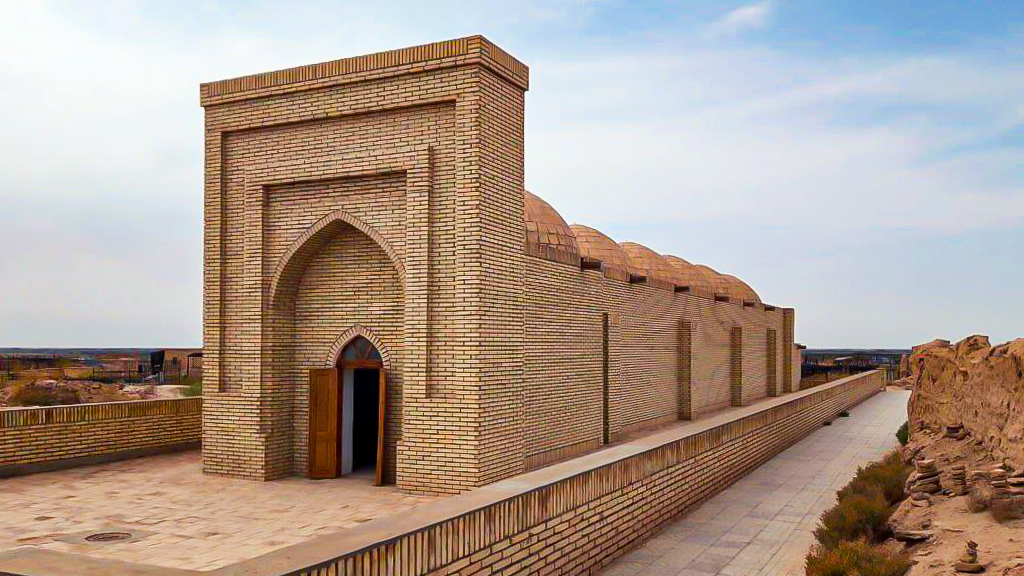
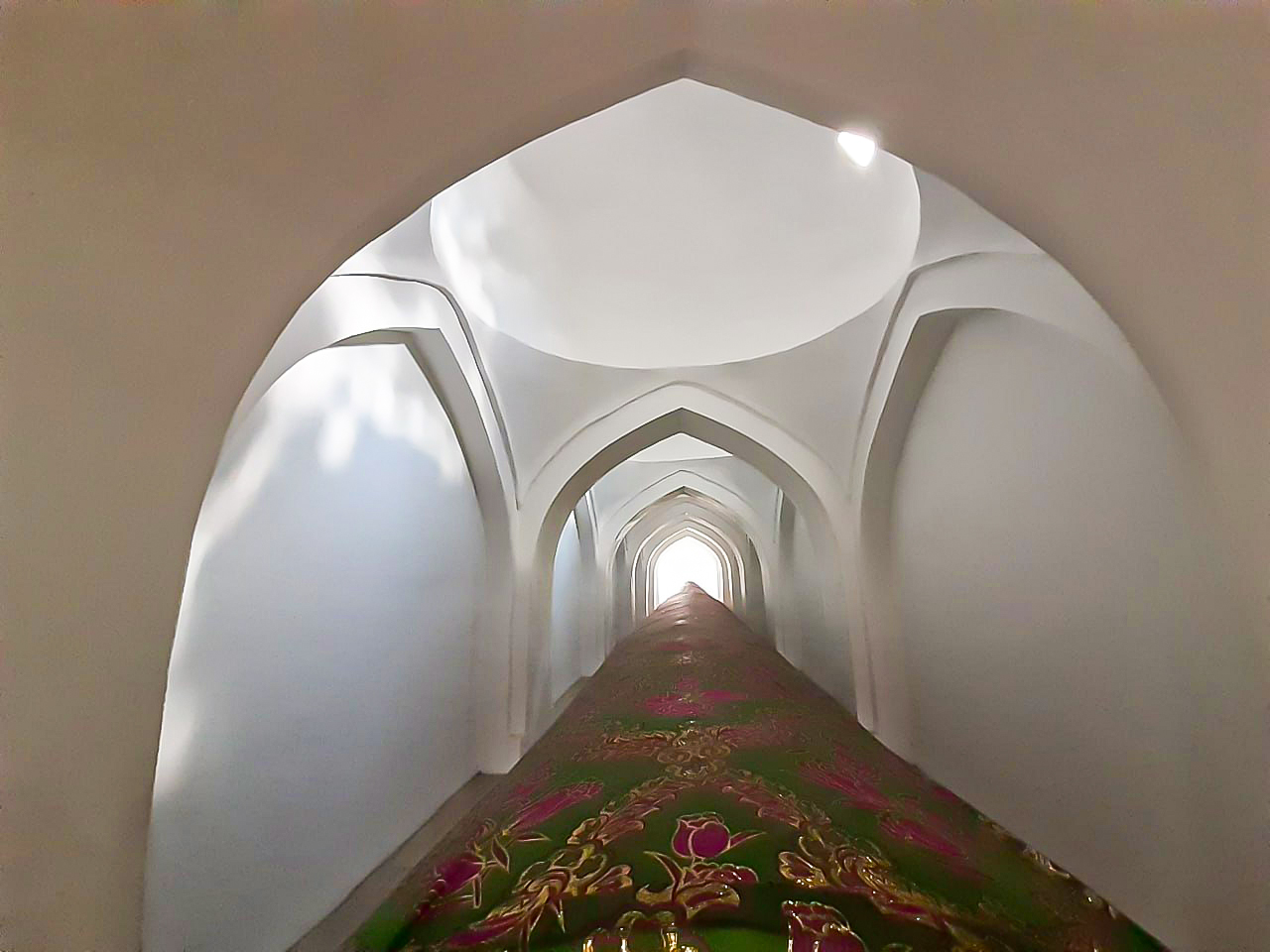 Next to the mausoleum of Shamun Nabi is the burial mound of Jomart Kassab, which stands about 5 meters high. At its top and slopes you can find remnants of structures made from burned brick and fragments of Khorezmian pottery, indicating the deep history of this site. Jomart once lived here, selflessly distributing food to the poor during years of famine.
Next to the mausoleum of Shamun Nabi is the burial mound of Jomart Kassab, which stands about 5 meters high. At its top and slopes you can find remnants of structures made from burned brick and fragments of Khorezmian pottery, indicating the deep history of this site. Jomart once lived here, selflessly distributing food to the poor during years of famine.
 For his kindness and compassion towards others, he was elevated to the rank of saint. There is also an assumption that this mound is linked to Zoroastrian burial practices and was used as a dakhma.
For his kindness and compassion towards others, he was elevated to the rank of saint. There is also an assumption that this mound is linked to Zoroastrian burial practices and was used as a dakhma.
Since ancient times, the Mizdakhkan complex has served as a center of attraction for pilgrims. Each year, over 2,000 tourists visit this sanctuary in hopes of connecting with its unique cultural heritage. From the heights of the mazars in the sacred land of Mizdakhkan, millennia gaze down upon you, prompting contemplation of the fleeting nature of time and the eternal truths that remain unchanged regardless of the era.